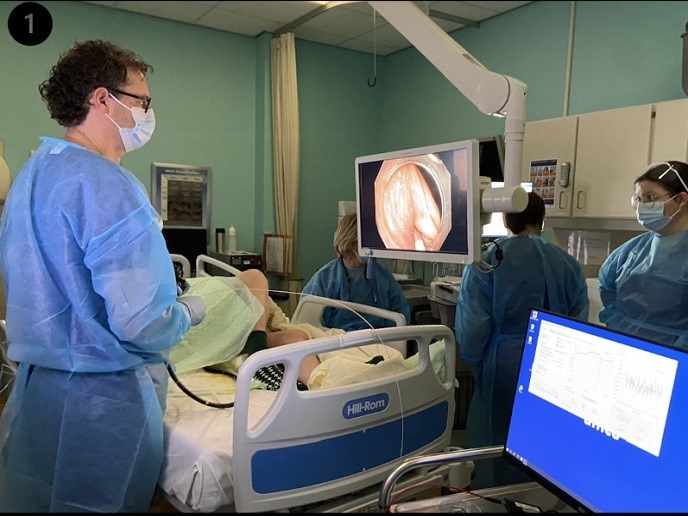Disrupting the care continuum
Although for most, surgery is the way to treat disease and pain, for nearly 1 % of all patients who undergo surgery, it is the cause of ongoing pain. “The challenge is that most pain medications come with significant side effects, including nausea and addiction,” says Fergal Ward, CEO and founder of Capri Medical(opens in new window). According to Ward, there is another option: neurostimulation, which is the purposeful modulation of the nervous system’s activity through, for example, electrostimulation. However, neurostimulation often requires an invasive surgical procedure to implement a medical device inside the body. Because this can result in infection, repetitive surgeries and even additional pain, neurostimulation is typically used as a last resort. “Patients are only considered for neurostimulation treatment once all other treatment options are exhausted,” explains Ward. “This means it’s usually not discussed until five to seven years after the patient is first diagnosed with chronic pain or various other neurological disorders.” With the support of the EU-funded CAPRI project, Capri Medical has developed a new, minimally invasive approach to neurostimulation. “Our vision is to disrupt the continuum of care and referral pathway by creating a more effective solution that reduces costs and risk and increases accessibility to more physicians and patients,” adds Ward.
A single injection under local anaesthetic
Although Capri Medical’s solution is a device, its use of bioelectronics means it is inserted not via invasive surgery but by a minimally invasive injection. “The device’s biggest differentiator is that it requires just a single injection under local anaesthetic,” notes Ward. “This means the patient can be discharged immediately afterwards.” Specifically, the solution consists of a neurostimulation implantable device that is injected through a delivery catheter, a process that both minimises tissue trauma and reduces the need for physician training. The neurostimulation device is powered by a wearable device and is controlled through a mobile application.
Answering the need for a new innovative solution
As Ward explains, the project allowed Capri Medical to develop the system’s core technology. “The funding allowed us to prototype enabling technologies, including silicon, wireless power systems, along with delivery technologies, which de-risked the opportunity for our investors,” says Ward. The company also leveraged the EU support to develop a comprehensive go-to-market strategy and explore multiple markets. “Although treatments using neurostimulation products are up to 80 % effective, they are designed for the spinal cord and not for the peripheral nerve, resulting in high rates of surgical revisions,” explains Ward. “This leaves the patient and physician severely underserved and in need of a new innovative solution.”
Focused on product development
Ward believes that the CAPRI project led to new funding opportunities, including the EU-funded TARA project, along with new investments. It has also submitted seven patent families and is preparing several additional families. “We are 100 % focused on product development, after which we will turn to conducting clinical trials and moving the product to market,” concludes Ward.







